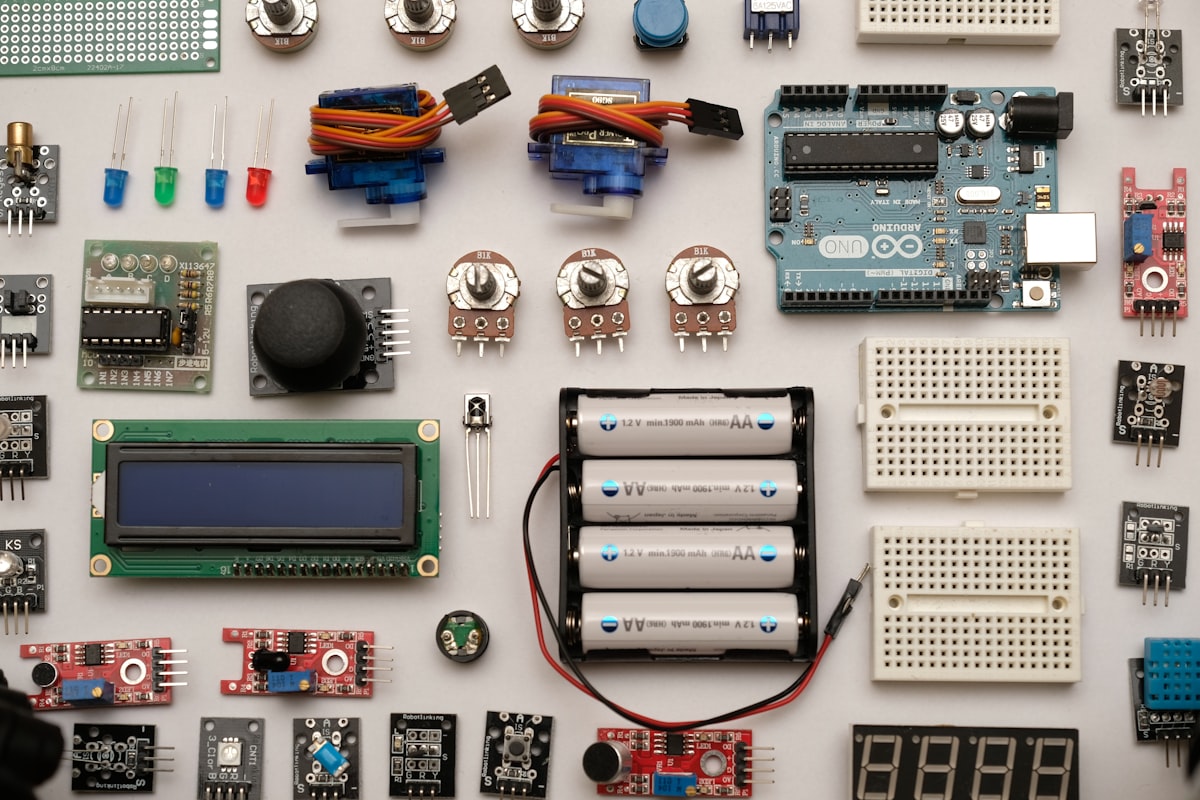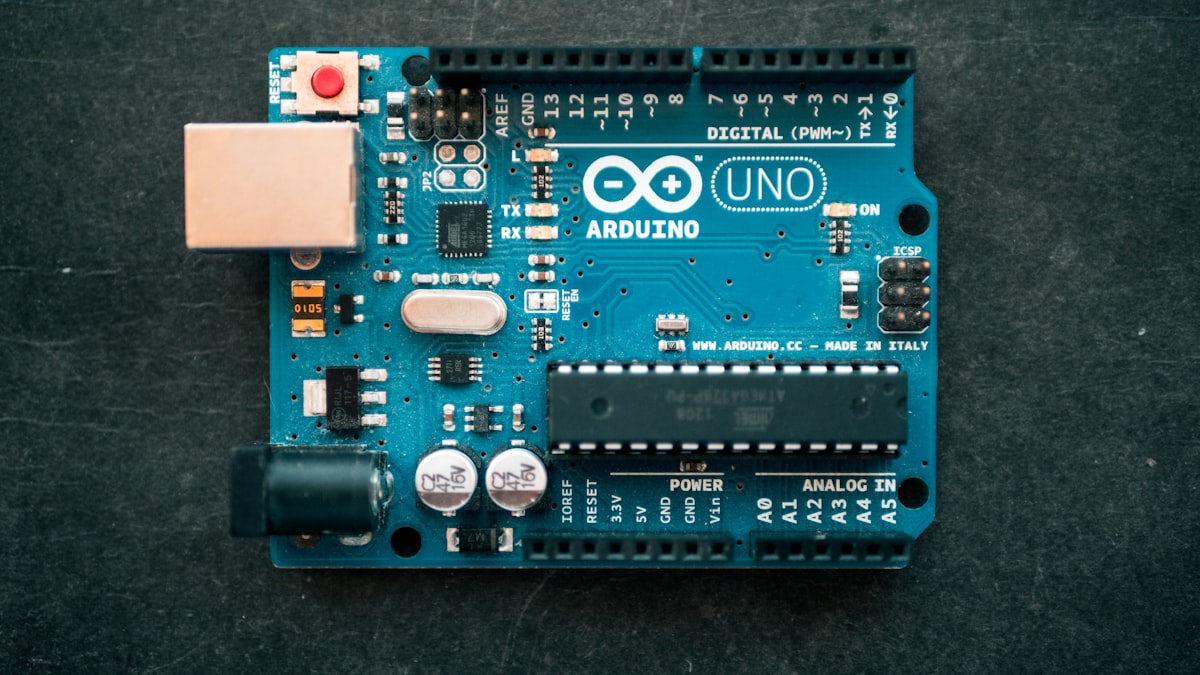Choosing the Right Microcontroller for Your Project
December 20, 2024Alex Rivera, Innovation Strategy Lead6 min read

Selecting the right microcontroller (MCU) can make or break your project. With thousands of options available, from simple 8-bit controllers to powerful 32-bit systems-on-chip, making the right choice requires balancing technical requirements, cost constraints, and future scalability. Let's navigate this complex landscape together.
Start with Your Requirements
Before diving into datasheets, clearly define what your product needs to do:
Core Functionality Questions
- What's the main application? IoT sensor, motor control, user interface, data processing?
- Real-time requirements? Hard real-time needs may require dedicated peripherals or RTOS support
- Connectivity needs? Wi-Fi, Bluetooth, cellular, or just UART/SPI/I2C?
- Power budget? Battery-powered devices need ultra-low-power modes
- Environmental conditions? Temperature range, humidity, vibration affect package choice
Technical Specifications Decoded
Understanding MCU specifications helps you filter options effectively:
Processing Architecture
-
8-bit (AVR, PIC, 8051): Simple control tasks, cost-sensitive applications
- Pros: Low cost ($0.50-$3), simple programming, predictable timing
- Cons: Limited processing power, small memory, basic peripherals
- Example use: Basic sensors, simple motor control, LED drivers
-
16-bit (MSP430, PIC24, dsPIC): Balanced performance and power
- Pros: Better math performance, more memory, advanced peripherals
- Cons: Higher cost ($2-$8), more complex than 8-bit
- Example use: Medical devices, industrial sensors, motor control
-
32-bit (ARM Cortex-M, RISC-V, ESP32): High performance applications
- Pros: Powerful processing, large memory, rich peripherals, good ecosystem
- Cons: Higher power consumption, complex design, cost ($3-$20+)
- Example use: IoT gateways, complex control systems, edge AI
Memory Architecture
Memory is often the limiting factor in embedded applications:
-
Flash Memory: Program storage
- 8-32KB: Simple applications, basic control
- 64-256KB: Complex algorithms, RTOS, networking stacks
- 512KB+: Graphics, data logging, OTA updates
-
RAM: Variable storage and stack
- 2-8KB: Basic applications
- 16-64KB: RTOS, networking, buffering
- 128KB+: Image processing, complex data structures
-
EEPROM/Data Flash: Non-volatile configuration storage

Peripheral Requirements
Built-in peripherals can eliminate external components and reduce system cost:
Communication Interfaces
- UART: Simple serial communication, debug output
- SPI: High-speed communication with displays, flash memory
- I2C: Multi-device communication, sensors, EEPROMs
- USB: PC connectivity, power delivery
- CAN: Automotive and industrial networks
- Ethernet: Network connectivity for IoT applications
Analog Features
- ADC Resolution: 10-bit (basic), 12-bit (standard), 16-24 bit (precision)
- ADC Speed: Consider sample rate vs. resolution trade-offs
- DAC: Audio output, analog control signals
- Comparators: Fast analog threshold detection
- Op-amps: Signal conditioning without external components
Timing and Control
- Timers: PWM generation, event timing, pulse counting
- RTC: Real-time clock for timestamping, scheduling
- Watchdog: System reliability and fault recovery
- DMA: Efficient data transfer without CPU intervention
Popular MCU Families Compared
Let's examine the most common choices in today's market:
STM32 (STMicroelectronics)
- Architecture: ARM Cortex-M0/M3/M4/M7
- Strengths: Huge selection, excellent peripherals, strong ecosystem
- Weaknesses: Can be overwhelming, some chip shortages
- Best for: Professional products, complex applications
- Price range: $1-$15
ESP32/ESP8266 (Espressif)
- Architecture: Xtensa LX6 (ESP32), Xtensa L106 (ESP8266)
- Strengths: Built-in Wi-Fi/Bluetooth, great value, active community
- Weaknesses: Higher power consumption, limited low-power modes
- Best for: IoT projects, wireless applications
- Price range: $2-$8
ATmega/AVR (Microchip)
- Architecture: 8-bit AVR
- Strengths: Simple, well-documented, Arduino compatible
- Weaknesses: Limited performance, memory constraints
- Best for: Learning, simple control, proven designs
- Price range: $1-$5
nRF52/nRF53 (Nordic Semiconductor)
- Architecture: ARM Cortex-M4/M33
- Strengths: Excellent Bluetooth implementation, ultra-low power
- Weaknesses: Limited peripherals, focused on wireless
- Best for: Bluetooth Low Energy products, wearables
- Price range: $2-$10
RP2040 (Raspberry Pi)
- Architecture: Dual-core ARM Cortex-M0+
- Strengths: Unique PIO blocks, good documentation, low cost
- Weaknesses: No internal flash, limited analog features
- Best for: Custom protocols, education, maker projects
- Price range: $1-$2
Power Consumption Optimization
For battery-powered devices, power consumption drives MCU selection:
Low-Power Features to Look For
- Multiple sleep modes: From light sleep to deep shutdown
- Wake-up sources: RTC, GPIO, serial, comparator
- Power domains: Disable unused peripherals
- Dynamic voltage scaling: Reduce voltage at lower frequencies
- Efficient regulators: Buck converters vs. LDOs
Real-World Power Numbers
- Active mode: 30-200 µA/MHz typical
- Sleep with RTC: 1-5 µA
- Deep sleep: 50-500 nA
- Wake-up time: 1-100 µs (affects average power)
Development Ecosystem
The best MCU is one you can actually develop for efficiently:
Development Tools
- IDE: Free vs. paid, features, debugging capabilities
- Compilers: GCC, IAR, Keil - optimization and code size
- Debuggers: J-Link, ST-Link, built-in options
- Development boards: Availability and features
Software Support
- RTOS options: FreeRTOS, Zephyr, Mbed OS compatibility
- Libraries: HAL, peripheral drivers, middleware
- Community: Forums, examples, third-party code
- Documentation: Datasheets, app notes, reference designs
Cost Considerations
MCU cost extends beyond the chip price:
Total System Cost Factors
- MCU unit price: Volume pricing can be 50% lower than prototype quantities
- External components: Crystal, capacitors, voltage regulators
- PCB complexity: Pin count and package affect routing
- Assembly cost: Fine-pitch packages cost more to place
- Development time: Familiar architectures reduce time-to-market
Future-Proofing Your Choice
Consider long-term implications:
- Product roadmap: Will you need OTA updates? More features?
- Supply chain: Multiple suppliers? Long-term availability?
- Scalability: Pin-compatible upgrade paths?
- Certification: Pre-certified modules for RF applications?
Our Recommendations
Based on our experience with hundreds of projects:
For IoT Sensors
First choice: ESP32-C3 (Wi-Fi + BLE, RISC-V, low cost)
Alternative: nRF52840 (BLE only, ultra-low power)
For Industrial Control
First choice: STM32F4 series (proven, robust, good peripherals)
Alternative: TI MSP432 (lower power, good analog)
For Battery-Powered Devices
First choice: STM32L4 series (ultra-low power Cortex-M4)
Alternative: MSP430FR series (FRAM, extreme low power)
For Cost-Sensitive Applications
First choice: STM32G0 series (modern Cortex-M0+, good value)
Alternative: PIC16F series (proven 8-bit, very low cost)
Making the Final Decision
Your MCU choice should balance:
- Technical requirements: Must-have features and performance
- Development efficiency: Tools, support, and familiarity
- Supply chain: Availability and multiple sources
- Total cost: Including development time and system BOM
- Future needs: Scalability and upgrade paths
Remember: the "best" MCU is the one that meets your specific needs at the right price point with acceptable risk. When in doubt, choose the MCU with the best ecosystem support - it will save development time and reduce project risk.
Need help selecting the right MCU for your project? Our engineering team can review your requirements and recommend optimal solutions. Contact us at rfq@source.parts.
Related Articles

PCBElectronics Design
Understanding PCB Design: A Comprehensive Guide
Dive deep into the fundamentals of Printed Circuit Board (PCB) design, from schematics to layout.
Read more
ManufacturingPrototyping
From Prototype to Mass Production: Scaling Your Hardware Product
Learn the key stages and considerations when taking your electronic hardware from a single prototype to mass production.
Read more